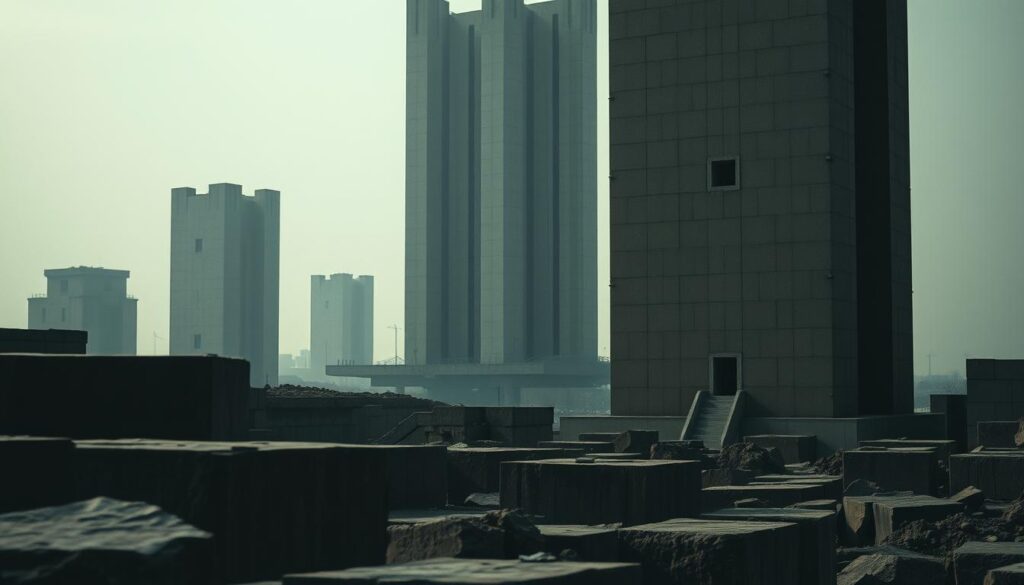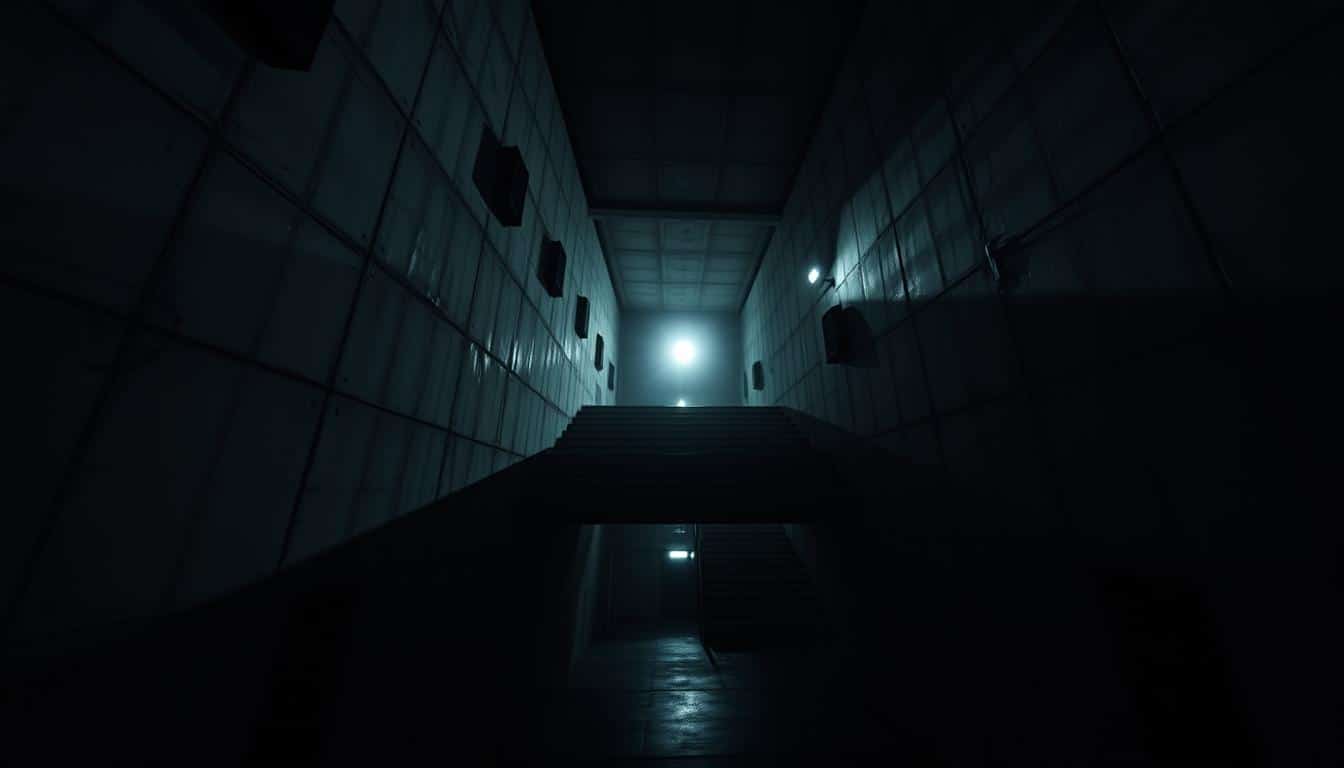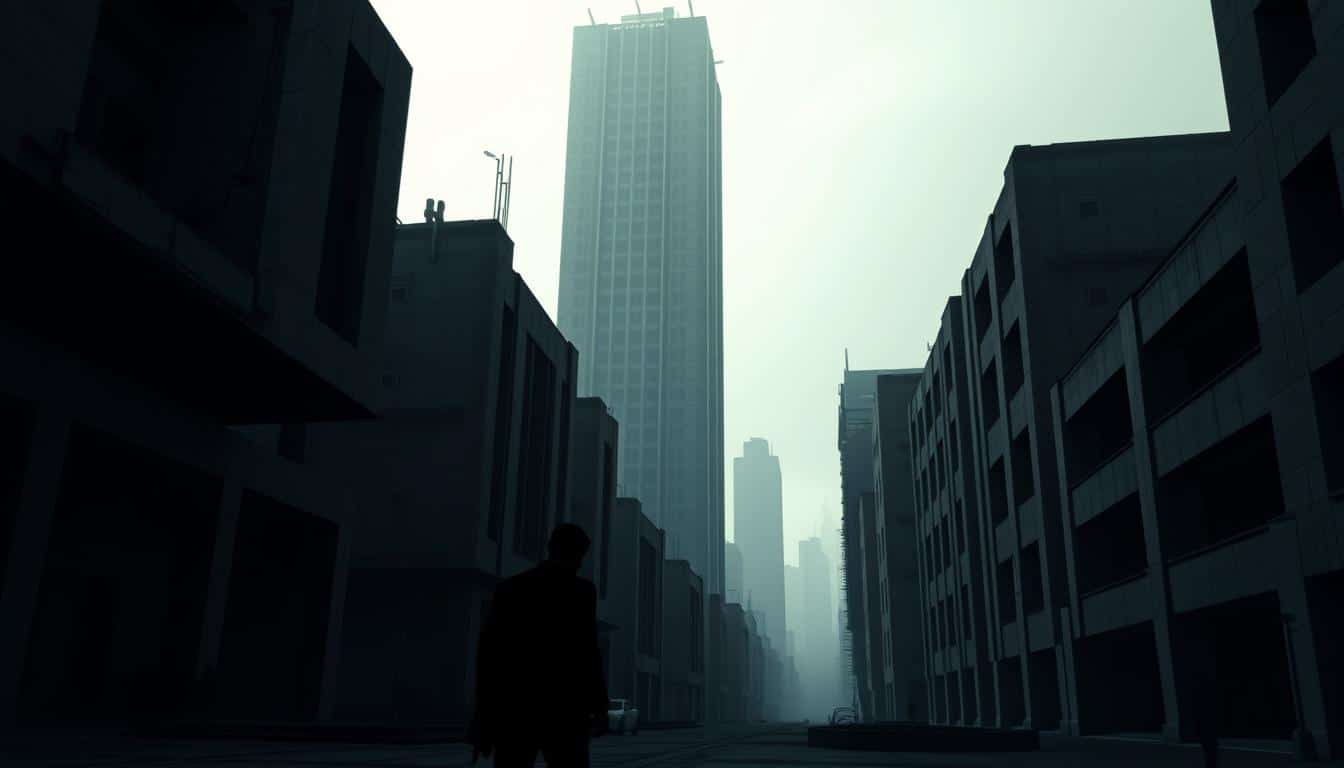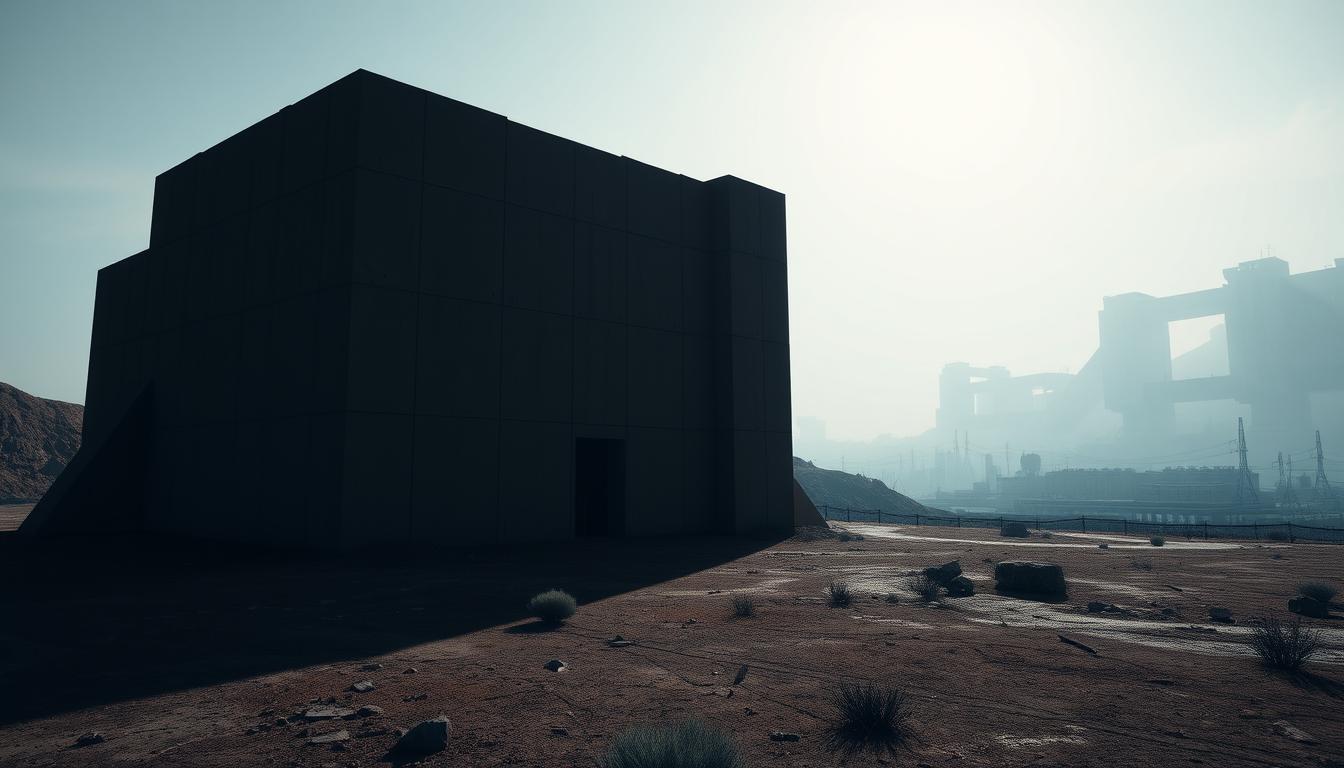Players often meet brutalism’s stark structures in horror games. These designs, known for their cold, hard lines, deepen the fear. Béton brut, or raw concrete, is what brutalism means. It brings discomfort, making each game encounter more unnerving. The mix of brutalism and horror games pulls deep emotions out of players. It adds to the fear they feel.
The Origins of Brutalism in Architecture
Brutalism started after World War II, a period of big changes in building history. Cities needed new, useful buildings quickly for their growing populations. This need led to a style that valued function and strength more than fancy looks.
Brutalism is famous for its use of béton brut, or “raw concrete.” This was a big change from earlier, more decorated styles. It showed off the raw beauty of materials like concrete and brick. Architects made buildings that reflected the tough social and economic times.
In city planning, brutalism was important for social housing and making cities better. It aimed to make places that brought people together. Brutalist buildings were designed to meet the varied needs of people. It changed how public buildings were seen, making spaces that felt more human.

The Aesthetic of Brutalism
Brutalist architecture stands out with its raw concrete and simple shapes. It’s all about being minimal and functional. Such buildings look like fortresses, making people feel a bit scared.
Concrete is key in brutalism, creating a lonely and stark vibe. Horror games love this style because it boosts feelings of being alone and scared. The thick materials and strong shapes make the atmosphere intense, ideal for scary moments.
Understanding Horror in Video Games
Horror video games tap into our deep fears, creating unforgettable experiences. They use stories that pull players into creepy worlds that play with our emotions. This genre uses different ways to scare players, from sudden scares to ongoing fears that stay with you.
The story is key in these games, building tales that touch players deeply. Characters face scary situations that reflect our fears and test our feeling of safety. By getting into the story, players feel a strong connection, making their journey more intense.
Sound is crucial to making a game scary. Creepy sounds, unexpected noises, and eerie music all build tension. They make the game’s world feel more threatening. The mix of sounds and visuals makes the game even more immersive, pushing players to face their fears.
Games let players make choices, adding to the horror. They navigate dangerous places and deal with threats, making the game more terrifying. The blend of story, sound, and interaction creates a deep horror atmosphere that’s hard to forget.
The Role of Environment in Horror Games
The environment in horror games is super important. It shapes how we feel and interact with the game. Well-designed surroundings make us feel like we’re really in a scary place.
Games tell stories through their settings. Places like creepy old houses or dark woods aren’t just scary. They remind us of our own fears. This makes the game more intense and real for us.
The way a game looks matters a lot. Good use of light and shadows can make us really scared. And if a game makes you feel trapped, you’ll be even more on edge. But, if it seems safe, you might let your guard down… and that’s when the game surprises you. This kind of design makes horror games truly thrilling.
Brutalism’s Influence on Player Emotions in Horror Games
Brutalist architecture changes how we feel in horror games, making us feel scared and alone. Its focus on plain, raw structures really affects our reactions. When playing, we move through large, empty areas with big concrete shapes. This makes us feel weak and exposed.
By using brutalist styles, games make their scary moments even more intense. They turn architecture into a tool to deepen the fear and immersion in these games.
Creating a Sense of Dread and Isolation
The feeling of being alone in a brutalist place makes the dread even stronger. As players, we walk through creepy spots, feeling like danger is everywhere. The vast, open spaces make us feel left behind by the world, facing horrors by ourselves.
This mix of feelings pushes us to deal with not just what scares us outside but also our own fears.
Architectural Elements that Enhance Terror
Certain design features really help make things scarier. Sharp angles and big, heavy structures make everything feel more pressing and scary. Walking down narrow paths, through poorly lit rooms, and past huge walls makes us feel trapped.
Games like Control (2019) use brutalist design very well. They create places that feel alive with the threat, making us feel more alone and worried. This is how these games nail the scary atmosphere.
Case Studies: Notable Horror Games Featuring Brutalist Design
Looking into horror games, we see brutalist design makes them much scarier. Games like Control and the Silent Hill series use architecture in special ways.
This builds fear and tension in their stories.
Control (2019)
The game Control takes you inside the Oldest House. It’s a huge building with a scary, simple design. The way it keeps changing makes you feel lost and scared.
You have to explore, never knowing what’s around the next corner. Control’s use of brutalism makes the game more intense and the story scarier.
Silent Hill Series
Silent Hill is known for its creepy, falling-apart buildings. The game world looks like what the characters feel inside: scared and confused.
The scary setting makes you feel the characters’ fears and pains more deeply. Silent Hill uses brutalist design to pull you into its dark story.
How Design Elements Shape Emotional Responses
Design elements are key in making horror games feel real. They use color, lighting, and sound to impact players. Dark colors can make us feel scared, while bright colors may surprise us. These choices help players feel like they’re really there.
Lighting helps tell the game’s scary story. Shadows can hide things, making us anxious. Lights can show us where to go but also make us tense. This makes the game’s world feel more real and scary.
Sound makes the game’s atmosphere deeper. Background sounds can make us more scared. Sudden noises can make us jump. These elements work together to keep players on their toes.
The Connection Between Gameplay Mechanics and Architectural Styles
The link between how we play games and the design of game buildings adds depth to horror games. Players move through spaces that show a scary focus on violence and despair. Each style of building changes how we interact with the game, making the horror feel more real.
For example, in some games, finding your way is hard because of the complex designs of the buildings. These places can make you feel trapped but also have vast areas. By adding puzzles that fit with the buildings, game makers make playing more engaging. Every part of the game feels important.
This combination also makes the game more tense. As players figure out puzzles and get past obstacles, they feel more scared. Solving these challenges not only tests players but pulls them into a scary experience. This shows how gameplay and building design work together to create a scary world.
Potential Criticisms of Brutalist Design in Games
Brutalist design in video games gets criticism for its bold, uncompromising look. Some players love its realness. Yet, others feel the visuals are too harsh, splitting player experience. The straight lines and plain materials might not appeal to everyone. This can impact how people connect with the story and game mechanics.
There are some gameplay drawbacks with brutalism’s tough appearance. If you’re not used to it, the style’s lack of coziness might make you feel lost or confused. This feeling of being far away can make it hard to get lost in the game. This is especially true for horror games, where feeling close to the action makes everything scarier. Brutalist settings can stir up intense feelings. But, they might not hit the mark with everyone.
The debate on brutalist environments in horror games is ongoing. Some say the bareness adds to the creepiness and fits the horror genre perfectly. Yet, some believe this look can hide important parts of the game. It might take away from what fans love about horror games. Understanding these different viewpoints helps us see brutalist design in games in a more detailed way.
Future Trends: Evolving Brutalism in Gaming
The gaming world is always changing. Nowadays, we see a new interest in brutalist design in games. Developers are mixing modern brutalist looks into their games. This approach makes games more impactful on an emotional level. With VR and AR growing, there’s a big chance to bring in new architectural ideas. This allows players to dive deep into places that really show off brutalism’s simple and bold style.
Game designers are starting to blend brutalism with other styles. This mix can make games more engaging for players, not just visually but mentally too. Mixing different styles within brutalism can make horror games more intense. It adds a unique feel, filled with suspense. In these games, players might find worlds that combine brutalist simplicity with other, softer design elements.
The upcoming horror games will be shaped by these new design ideas. They promise to push the boundaries but stay true to what makes horror games gripping. As tech moves forward, mixing different design styles could change how we experience game spaces. This could make horror games even more immersive and exciting.
Conclusion
The emotional power of brutalism in horror games leads to more engaged players. Its raw look connects well with fear, creating a deep, scary atmosphere. This makes players feel real dread and unease.
Brutalism’s stark and intense style helps make the story more complex. It allows game designers to build spooky settings. These settings do more than just look scary; they make players feel like they’re on an emotional journey.
Looking at brutalism in horror games shows us how architecture, design, and stories can blend together. As games get better, exploring how buildings affect emotions will lead to deeper stories. It will make gameplay even more immersive in the future.



